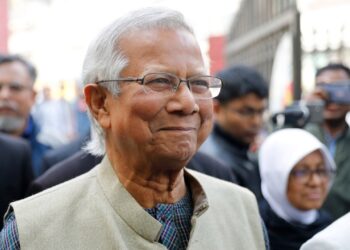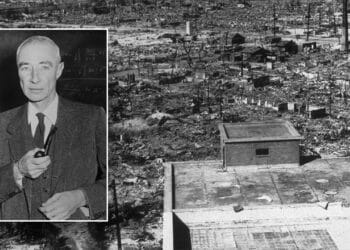Drug cartel violence and land disputes are making certain Mayan ruin sites in Mexico unreachable, according to the government.
The drug violence in Chiapas, which has proliferated since last year, has left the Yaxchilán and Bonampak ruin sites completely cut off, the government said Friday.
The latter ruin, famous for its murals, is inaccessible due to gunmen and checkpoints on the road leading to it, tour guides told The Associated Press.

The Labyrinth, Structure 19, archaeological site of Yaxchilan, Chiapas, Mexico. Mayan civilization. (Getty Images)
They said that travelers are forced to hand over identification and cellphones at cartel checkpoints to yet another archaeological site, Lagartero.
Visitors also can’t visit the towering pyramids at Tonina, because a landowner has shut off access his land while seeking payment from the government for granting the right of way.
MEXICO DEMANDS ANSWERS AMID FLOOD OF US MILITARY-GRADE WEAPONS TO DRUG CARTELS
Though no tourist has been harmed so far, and the government claims the sites are safe, many guides no longer take tour groups there.
One of the tour guides likened the suggestion to being told it was safe to go to the Gaza Strip.
Both guides who spoke to The Associated Press stressed that the best-known and most spectacular Mayan ruin site in Chiapas, the imposing temple complex at Palenque, is open and perfectly safe for visitors. But starting around December, tourists have canceled about 5% of trips booked to the area.
Things that some tourists once enjoyed — like the more adventurous trips to ruins buried deep in the jungle, like Yaxchilán, on the banks of the Usumacinta river and reachable only by boat — are either no longer possible, or so risky that several guides have publicly announced they won’t take tourists there.
Residents of the town of Frontera Comalapa, where the boats once picked up tourists to take them to Yaxchilan, closed the road in October because of constant incursions by gunmen.

Tourists at Yaxchilan. Usumacinta Province, Chiapas, Mexico. (Photo by: Dosfotos/Design Pics Editorial/Universal Images Group via Getty Images) (Dosfotos/Design Pics Editorial/Universal Images Group via Getty Images)
Cartel battles increased in Chiapas in 2023, which coincides with the uptick in the number of migrants — now about a half-million annually — moving through the Darien Gap jungle from South America, through Central America and Mexico to the U.S. border.
Because many of the new wave of migrants are from Cuba, Asia and Africa, they can pay more than Central Americans, making the smuggling routes through Chiapas more valuable. The problem now seems to be beyond anyone’s control.
The other tour guide said that was because the two warring drug cartels, Sinaloa and Jalisco, often recruit or force local people to act as foot soldiers and prevent National Guard troopers from entering their towns.
In Chiapas, residents are often members of Indigenous groups like the Choles or Lacandones, both descendants of the ancient Maya. The potential damage of using them as foot soldiers in cartel fights is grim, given that some groups have either very few remaining members or are already locked in land disputes.
CLICK HERE TO GET THE FOX NEWS APP
The guide said the ruin sites have the added disadvantage of being in jungle areas where the cartels have carved out at least four clandestine landing strips to fly drugs in from South America.
The Associated Press contributed to this report.
(this story has not been edited by TSA Mag staff and is published from a syndicated feed.)
Drug cartel violence and land disputes are making certain Mayan ruin sites in Mexico unreachable, according to the government.
The drug violence in Chiapas, which has proliferated since last year, has left the Yaxchilán and Bonampak ruin sites completely cut off, the government said Friday.
The latter ruin, famous for its murals, is inaccessible due to gunmen and checkpoints on the road leading to it, tour guides told The Associated Press.

The Labyrinth, Structure 19, archaeological site of Yaxchilan, Chiapas, Mexico. Mayan civilization. (Getty Images)
They said that travelers are forced to hand over identification and cellphones at cartel checkpoints to yet another archaeological site, Lagartero.
Visitors also can’t visit the towering pyramids at Tonina, because a landowner has shut off access his land while seeking payment from the government for granting the right of way.
MEXICO DEMANDS ANSWERS AMID FLOOD OF US MILITARY-GRADE WEAPONS TO DRUG CARTELS
Though no tourist has been harmed so far, and the government claims the sites are safe, many guides no longer take tour groups there.
One of the tour guides likened the suggestion to being told it was safe to go to the Gaza Strip.
Both guides who spoke to The Associated Press stressed that the best-known and most spectacular Mayan ruin site in Chiapas, the imposing temple complex at Palenque, is open and perfectly safe for visitors. But starting around December, tourists have canceled about 5% of trips booked to the area.
Things that some tourists once enjoyed — like the more adventurous trips to ruins buried deep in the jungle, like Yaxchilán, on the banks of the Usumacinta river and reachable only by boat — are either no longer possible, or so risky that several guides have publicly announced they won’t take tourists there.
Residents of the town of Frontera Comalapa, where the boats once picked up tourists to take them to Yaxchilan, closed the road in October because of constant incursions by gunmen.

Tourists at Yaxchilan. Usumacinta Province, Chiapas, Mexico. (Photo by: Dosfotos/Design Pics Editorial/Universal Images Group via Getty Images) (Dosfotos/Design Pics Editorial/Universal Images Group via Getty Images)
Cartel battles increased in Chiapas in 2023, which coincides with the uptick in the number of migrants — now about a half-million annually — moving through the Darien Gap jungle from South America, through Central America and Mexico to the U.S. border.
Because many of the new wave of migrants are from Cuba, Asia and Africa, they can pay more than Central Americans, making the smuggling routes through Chiapas more valuable. The problem now seems to be beyond anyone’s control.
The other tour guide said that was because the two warring drug cartels, Sinaloa and Jalisco, often recruit or force local people to act as foot soldiers and prevent National Guard troopers from entering their towns.
In Chiapas, residents are often members of Indigenous groups like the Choles or Lacandones, both descendants of the ancient Maya. The potential damage of using them as foot soldiers in cartel fights is grim, given that some groups have either very few remaining members or are already locked in land disputes.
CLICK HERE TO GET THE FOX NEWS APP
The guide said the ruin sites have the added disadvantage of being in jungle areas where the cartels have carved out at least four clandestine landing strips to fly drugs in from South America.
The Associated Press contributed to this report.















